Fox News Flash top headlines for February 21
Fox News Flash top headlines are here. Check out what's clicking on Foxnews.com.
Each year, millions of Americans reportedly deal with nail infections on their feet and hands.
Up to 14% of the general population cope with fungal infections, while a rare number of people develop a bacterial infection "on top of a fungal nail infection" that can "cause serious illness," according to the Centers for Disease Control and Prevention (CDC).
Nail infections can occur in various public or at-home settings, including locker rooms, public showers and nail clipper sharing — but nail salons are a place where chances of infection can be higher if sanitation procedures aren’t strictly followed.
DERMATOLOGISTS WARN AGAINST FACE-WAXING TREND ON TIKTOK
Anita House, 59, of Flowery Branch, Georgia, believes it was a nail salon where her infection began – eventually leading to an amputation.
"When it just starts to get warm, you’re thinking, ‘sandals’ and you’re thinking, ‘pedicure,’" House told Fox News Digital.
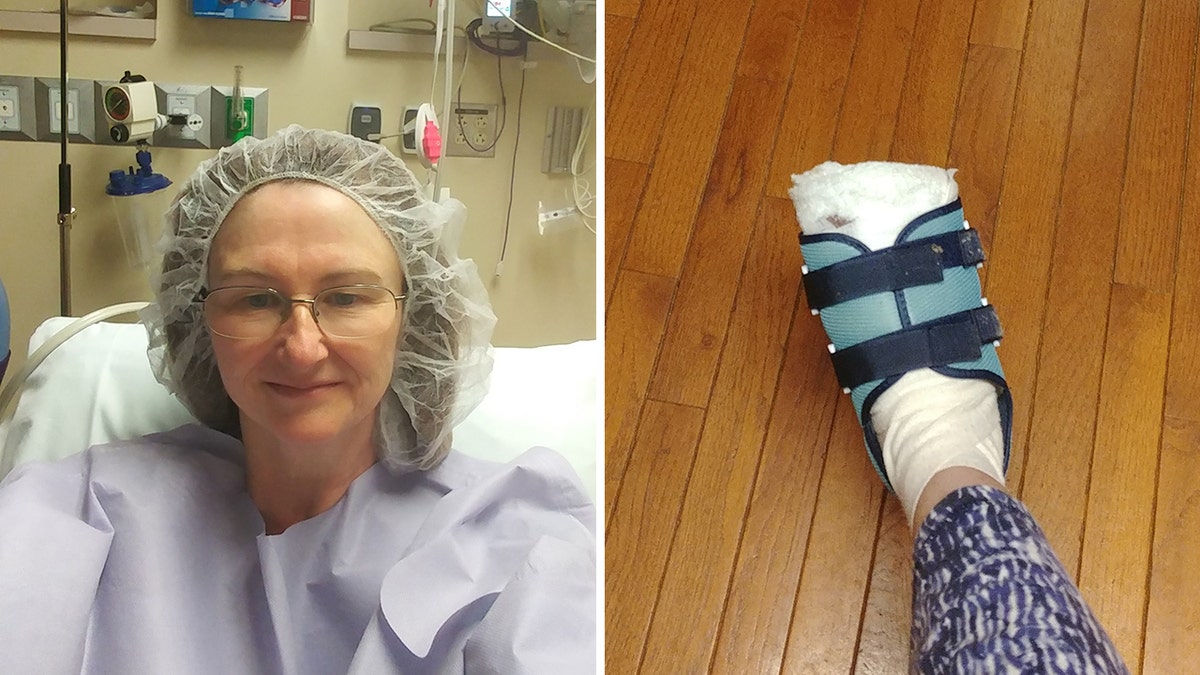
Anita House, 59, of Flowery Branch, Georgia, is aiming to raise awareness about nail salons and cleanliness after she lost a toe not long after receiving a pedicure, she told Fox News Digital. (Anita House)
House said that it was the last weekend in February 2019 when she and her sister headed to a local nail salon to receive pedicures.
House said she had frequented that same salon several times before with no issues.
It was a typical weekend day and according to House, staff used what appeared to be a clean, disposable liner in the pedicure tub.
House described what happened over the next few weeks, which turned into months, as "painful."
There were roughly 15 customers receiving salon services that day – including House and her sister, House recalled.
The pedicure began and the salon worker who was handling House’s feet had proceeded to remove an ingrown toenail on the large toe of House’s right foot, a practice that’s arguably done often at nail salons.

House said her friends, family, faith and positive attitude got her through the scary experience of losing her toe after a pedicure. (Anita House )
"They would often see it and get it out," House said of her ingrown toenail.
"I’ve never had an issue with it ... but she cut it, and she cut deep. It bled."
"That’s [my guess] of when bacteria got in," she added. "I can’t prove it in a court a law, but if I was a betting woman, that would be my bet."
House described what happened over the next few weeks, which turned into months, as "painful."
Over the next four days, her toe became "red and puffy," she said.
"I said, ‘If it’s not better in four or five more days, I’ll go to a podiatrist,'" House recalled.
House said she did end up seeing a podiatrist, who gave her antibiotic cream plus an oral antibiotic, which House was instructed to take for seven days.
The treatment didn’t work, and her toe became more red and swollen.
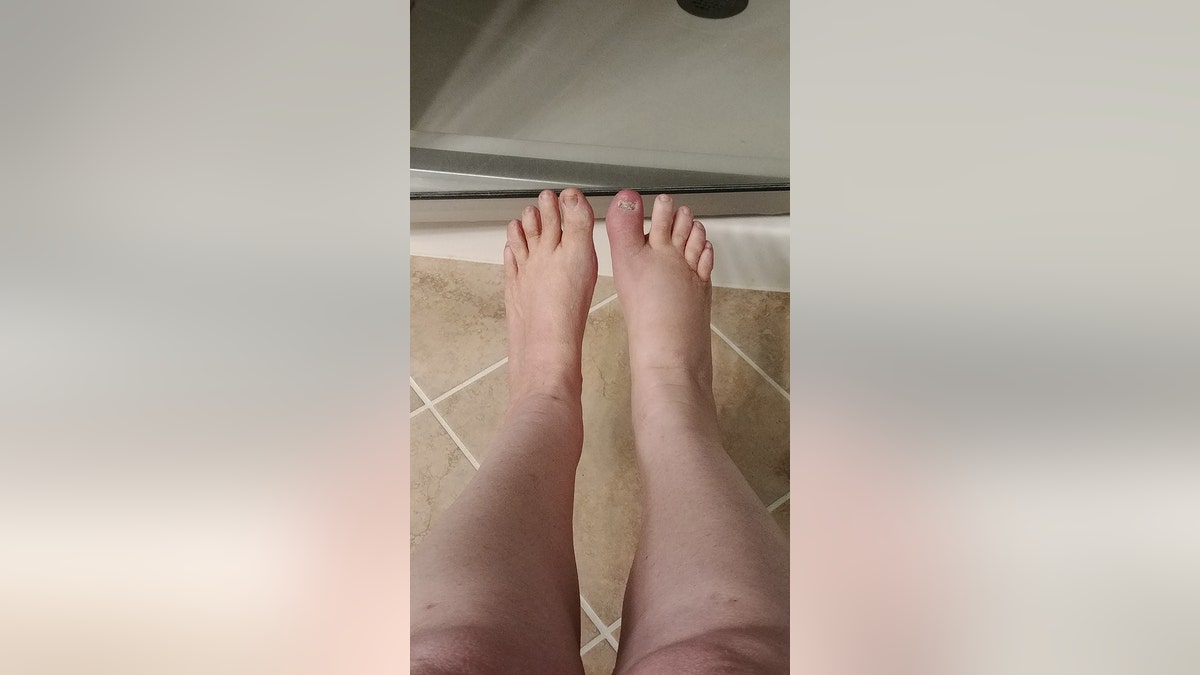
House told Fox New Digital that her toe was red, swollen and tender after a nail technician removed an ingrown toenail from the big toe on her right foot – a practice that often occurs in nail salons. (Anita House)
"That was the middle of March," House said, adding that the wound became painful.
"Not to the point where you couldn’t walk," she explained. "It was sore. It was tender."
House decided to see a second podiatrist, who prescribed her another round of antibiotics, but things didn’t get better.
"He said, ‘OK, we are going to remove the nail,’" House recalled of what the doctor decided at the time. "I looked at the ceiling, talked to myself, prayed ... It was not fun."

House saw several doctors before the bacterial infection in her toe grew worse — as did the pain, she said. (Anita House)
Four weeks after House’s toenail was removed, she saw no improvement and met with Dr. Manuel Rodriguez, an infectious disease specialist.
Rodriguez told Fox 5 Atlanta that a culture was never taken of the bacteria inside House’s toe in order to determine where she contracted the infection.
Rodriguez told the station that he had seen the type of infection that House had in people who had other health issues like diabetes, for example.
"In Ms. House's case, she didn't have any of the typical comorbidities to say, 'Wow, this woman is going to have a problem in the near future,'" Rodriguez told Fox 5 Atlanta.
"So, it was quite unusual in her case for it to advance the way it did."
Fox News Digital reached out to Rodriguez for comment.

House said the infection didn't get better over time. Instead, it continued to get worse. (Anita House)
House said that she was grateful to have found Rodriguez.
She received IVs and when her veins had trouble, a port was placed into her chest in hopes to treat the bacterial infection.
She credits her "fun and upbeat attitude" and leaning on her faith, which all helped her cope.
"By that point he [Rodriguez] was getting concerned that the infection was going to spread [and] he didn’t want it in my bloodstream," House noted. "He knew it was in the bone in the toe by that point."
Still, House tried to live her life normally – even taking a vacation in September.
That same month however, she began to feel ill. And on Oct. 15 2019, House’s right toe was surgically removed in its entirety.
WARNING: Images included in this story may be disturbing to some viewers
"We decided to take it off in the joint into the foot, just in case [the infection] had jumped to the second bone," House said, adding that the procedure was performed by a doctor (not Rodriguez) at Emory University Hospital in Atlanta.
"Going through it, it was very interesting," she said. "I always thought of myself as strong in my faith. Let me tell you, that was a test. I did pretty good. There were only two times where I broke down and got pretty upset."
House said that "God must have had a reason" for why she had gone through this. She credits her "fun and upbeat attitude" and leaning on her faith, which all helped her cope.
"I would not wish this on my worst enemy."
House’s husband Rob was also there to support her.
"Rob is so laid back. He never gets anxious, never gets upset, never gets worried. He’s just one of those guys," she said.
"I'd rather lose a toe than lose my foot. Once we had that conversation, he said, ‘OK. That’s what we’ll do.'"
House said that Dr. Rodriguez told her that her infection had him "stumped," since she had no underlying health conditions.

House now wears a pad on the bottom of her foot, which is commonly used by dancers. This is the product that House said she uses. (Anita House)
House also said another doctor who treated her for this infection had mentioned that he had seen other alleged nail service-related infections, but those incidents had been treated with antibiotics.
After her surgery, House was mobile four weeks later. She wore a boot for two to three weeks.
House said she feels self-conscious at the beach, and the loss of her toe has affected her hobby of practicing yoga. She now uses a dancer’s pad to help support the ball of her foot.
"I’m a walking PSA."
House did speak to an attorney after her incident as well as the county health department.
She said that the COVID-19 pandemic put a hold on pursuing action.
She said that the nail salon where she believes the cause of her infection took place is currently "operating and running."
"It’s not necessarily that I wanted them punished, but [rather], ‘You should be aware of what you’ve done,’" House said.

On Oct. 15 2019, House's big toe on her right foot was removed in order to prevent the spread of infection, she told Fox News Digital. (Anita House)
"I’m a walking PSA," she added. "After three podiatrists, one infectious disease doctor, antibiotics and an amputation — please know what you’re walking into."
"That’s self-care, I get it. I enjoyed it. I enjoyed it tremendously," House said of manicures and pedicures.
"Women be aware, conscious … If you’re getting that icky feeling, turn around and walk out."
She added, "I would not wish this on my worst enemy."
House offered advice to women who frequent nail salons:
Don’t go to nail salons during busy times. House said she believes that since she went on a busy weekend, the staff might not have sterilized efficiently.
Watch to make sure that salon workers are sterilizing. And when in doubt, she said, "bring your own tools."
Nail safety: Protecting yourself
Dr. Dusan Sajic, a dermatologist and assistant adjunct professor of clinical medicine at McMaster University, a public research university in Hamilton, Ontario, Canada, told Fox News Digital that fungus and yeast have been reported from nail salons in addition to "several bacteria."
VIRAL NAIL POLISH HACK SHOWS HOW YOU CAN GET A QUICK AND EASY MANICURE
Bacteria that have been commonly found in salons include methicillin-resistant staphylococcus aureus (MRSA), the germ that causes staph infections; pseudomonas aeruginosa, the germ that often causes blood or lung infections and mycobacteria, the germ that can potentially cause tuberculosis and leprosy.

The Centers for Disease Control and Prevention reports that most of the recorded nail infections are fungal in nature — and the majority happen on feet. Nail salons perform pedicures, a cosmetic treatment where nail technicians soak feet, remove dead skin and paint toenails, which can transfer fungus or bacteria to a client if one isn't careful. (iStock)
"In the year 2000, there was a large outbreak of mycobacterial furunculosis in northern California, which lead to a public health crackdown that showed that most salons didn’t regularly clean the screens and filters that trap skin debris in these whirlpool baths," Sajic said.
"This omission resulted in both large and small sporadic outbreaks of mycobacterial infections on the shins of individuals who had [gotten] a pedicure within two weeks of the procedure," he continued.
"Mycobacterial infections tend to be the most common and also the most difficult to diagnose and treat."
Mycobacterial infections are hard to detect because small red bumps are an early sign of the infection, which look similar to bug bites, according to Sajic.
LONG NAILS MAY NOT BE AS HYGIENIC AS YOU THINK: REPORT
The red bumps can reportedly grow in size, become tender, turn purple and develop pus in a few weeks or months.
If left untreated, Sajic said the bumps that have been caused by a nail infection can progress into an ulcer, which can lead to potential "permanent scars."

Manicures are a cosmetic treatment; nail technicians shape and paint nails and soften the surrounding skin. (iStock)
Some lesions can progress to frank ulceration while others spontaneously resolve with substantial scarring, according to Sajic.
"Very rarely in immunocompromised individuals these can get into the bloodstream and become a potentially life-threatening condition," Sajic said.
"One untreated, healthy patient had lymphatic disease dissemination, which resolved with a long course of antibiotic treatment."
CLINIQUE’S 1971 LIP SHADE BECOMES TIKTOK FAMOUS AND IMMEDIATELY SOLD OUT IN STORES, ONLINE
Nail salon questions and considerations
The Associated Nail Professionals (ANP), a nail salon and technician association that provides liability insurance and expert guidance from its Golden, Colorado headquarters, has been covering nail care advice to professionals and students since 1987.
Liz Kline, the ANP’s cosmetology program director, said there are many questions and considerations people should take into account before they get their nails professionally done.
Research before you go
Nail salon customers could benefit from looking at salon reviews before they request a manicure or pedicure, according to Kline.
"Just like checking reviews for a restaurant or any other place of business, it will give the client an idea of the look and feel of the nail salon to see if it may be a place they would like to go," Kline told Fox News Digital.
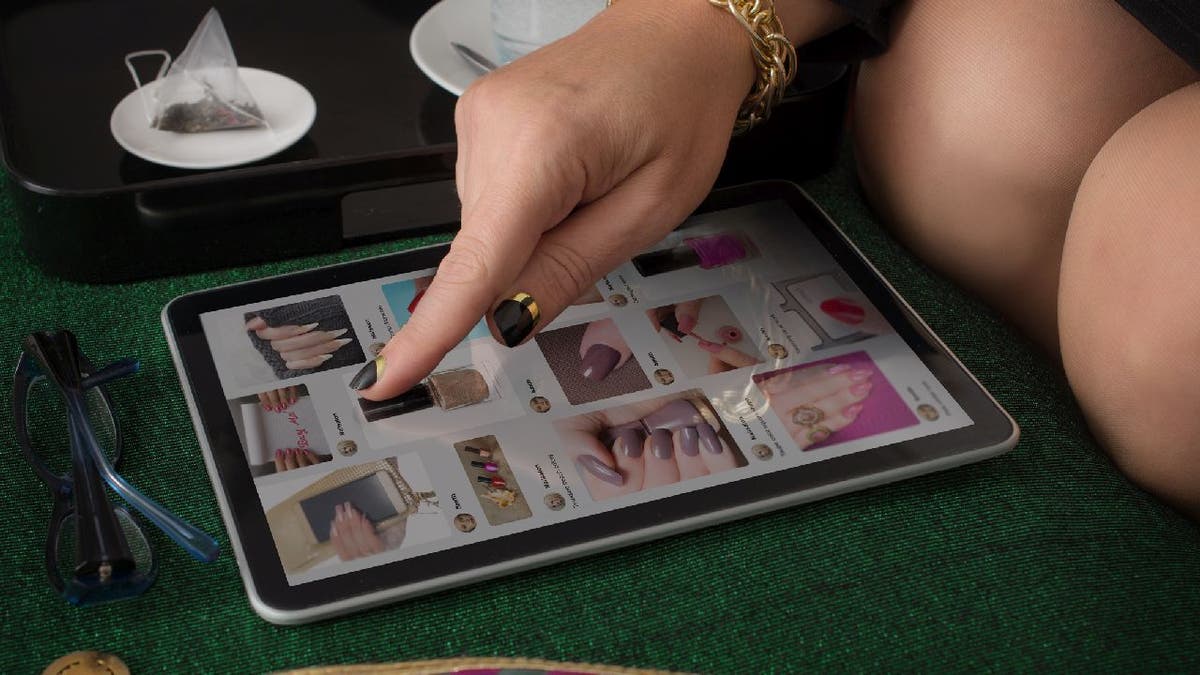
Researching a nail salon before going in for a service can help a customer decide if an establishment is a right fit for their needs. (iStock)
Kline added that nail salon customers should make sure their nail technician has an up-to-date nail certification.
HOW TO KNOW IF YOUR SUNSCREEN IS EXPIRED
"In most states, it's a requirement that licensing is displayed in an area that the public can see," Kline said. "If you do not see any professional licenses displayed in a waiting area or near the technician’s station, that is a red flag."
Ask questions
Kline said it’s not uncommon for nail salon customers to ask technicians about the cleanliness of tools.
Barbicide, a brand of disinfectant solution that’s used by barbers and cosmetologists, is a liquid that many nail salons use to sanitize tools, according to Kline.
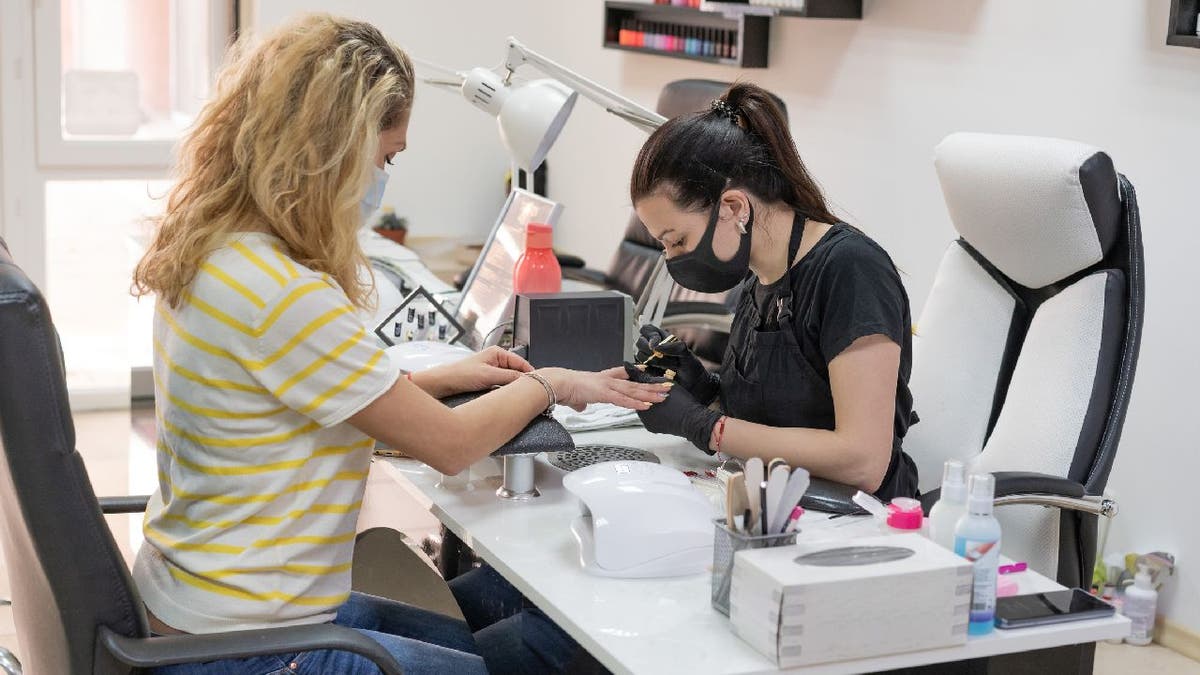
Nail technicians should have sanitation tools and solutions near their manicure and pedicure stations. (iStock)
The bacteria-killing ingredient that’s in Barbicide and similar cosmetic disinfectants is benzalkonium chloride, an organic salt that has antiseptic properties, according to the National Library of Medicine.
FISH PEDICURE CAUSES WOMAN TO LOSE HER TOENAILS, REPORT SAYS
Customers can look for the presence of disinfectant solutions and fungicide – a chemical solution that destroys parasitic fungi and spores – near pedicure bowls or manicure tables, Kline said.
If customers see nail tools in a container that’s filled with disinfectant solution, that’s a sign a salon is taking steps to ensure their nail tools are clean before a service, she explained.

Some nail tools are designed to be disposable, including emery boards, nail buffers and gloves. (iStock)
"Don’t be embarrassed to call beforehand and ask about sanitation procedures if you are concerned about cleanliness," Kline said. "Also, if you are in the middle of getting a service and have questions, don’t be afraid to speak up."
Kline added that it’s common for nail technicians to have new nail files and implements in a sealed tamper-resistant plastic wrap, which is opened in front of the client.
If a nail salon customer requests that nail tools be sanitized again before their service, Kline said there "should be a problem," but customers should be wary if a nail salon is resistant to their request.
PINTEREST SAYS THESE STYLE TRENDS WILL BE BIG IN 2022: PEARLS, MULLETS, CHECKERBOARDS AND MORE
Arm yourself with sanitation knowledge
Sajic told Fox News Digital that some nail salons opt to sanitize tools with an autoclaving method, meaning a technician sterilizes their tools with a steam machine.
"The technician should tell you that they look for changing in the color of the tape and biological indicators," Sajic said.
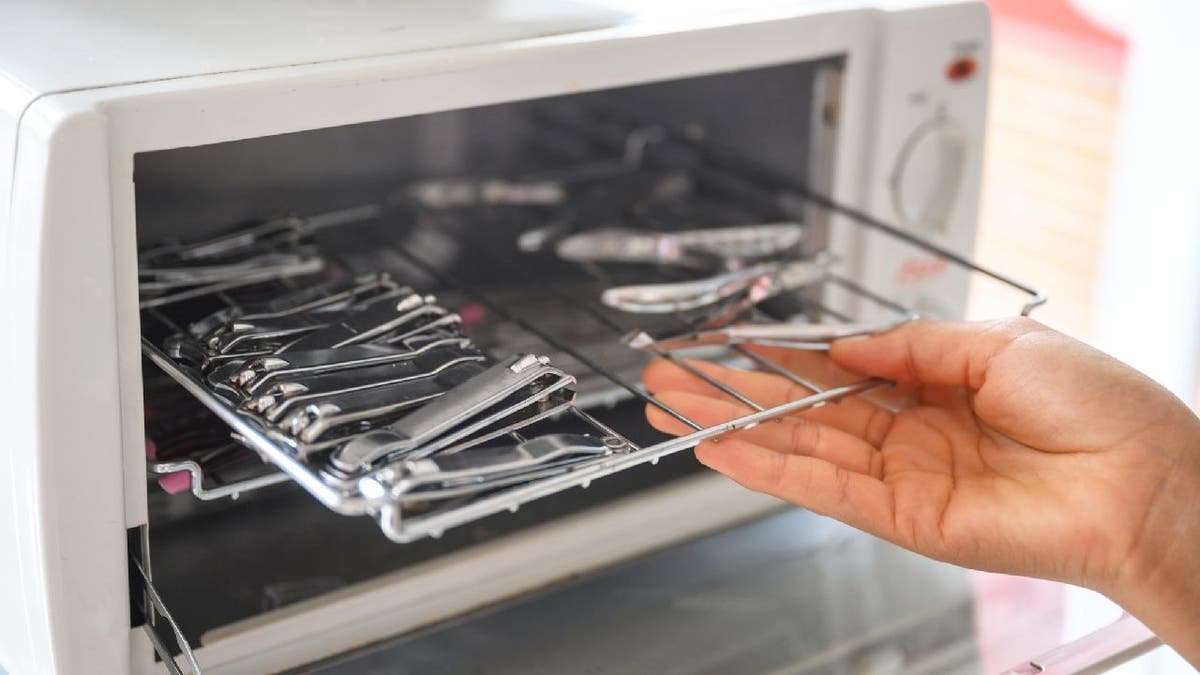
Metal nail grooming tools can be sterilized with an autoclave machine, which uses steam and pressure to kill harmful fungus, bacteria and viruses. (iStock)
If a "cold sterilization" is used, nail salons tend to use cosmetic disinfectant solutions that have received registered labeling from the U.S. Environmental Protection Agency, he said.
The reusable nail tools that need to be sanitized in between clients include nail clippers, nippers and other metal instruments, according to Sajic.
Nail tools that cannot be sterilized and must be disposed of after use in salon settings include emery boards, nail files and orange wood sticks.
WOMAN: PEDICURE-GONE-WRONG KILLED MY HUSBAND
"Some salons have individual boxes for each client with their name on it and store both metal and disposable implements there between visits," Sajic said. "This is OK, as long as you believe that the pedicurists are not using supplies in your box on someone else."
"You can also choose to bring their own instruments," he noted.
Avoid cuticle cutting
Nail salon customers can ask their nail technicians to ditch cuticle trimmers if the tool is pulled out during a service, especially if infections are a concern.
In some states, cuticle cutting is apparently an illegal practice in nail salon settings because it’s considered a surgical procedure, according to Pedicure.com, an online nail care resource.
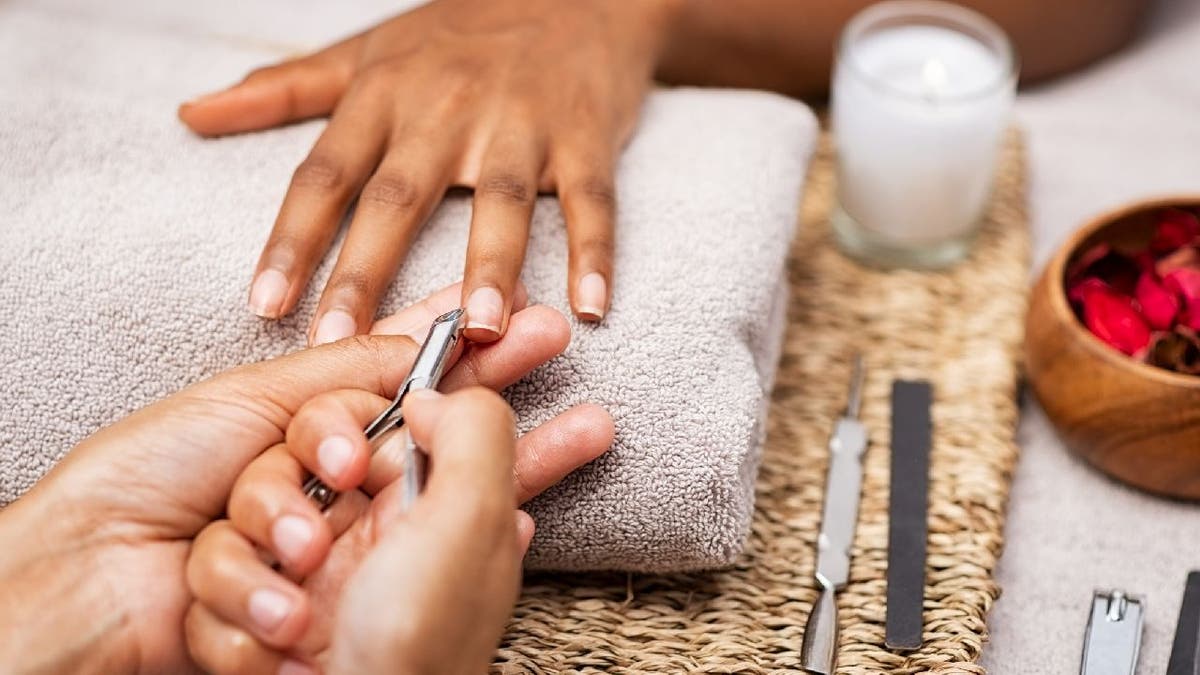
Some nail salons trim nail cuticles while others don't. Check your state's stance on cuticle cutting. In some places, the practice can be against the law. Customers usually have the choice of whether to have their cuticles trimmed or not. (iStock)
"The skin that we see at the base of the nail is actually the eponychium," Kline told Fox News Digital.
"The [true] cuticle is a thin layer that is attached to the nail plate. It’s ok to have the eponychium skin pushed back to clean the base area of the nail and to create a nice, prepped shape before applying polish. However, it is not recommended to cut this skin."
The eponychium is a piece of skin that acts as a protective barrier that prevents pathogens from infecting the nail’s matrix area, Kline explained.
In some states, cuticle cutting is apparently an illegal practice in nail salon settings.
"A better solution rather than cutting the skin is to keep the area moisturized with a cuticle oil and to gently push it back," Kline said. "This will help to keep the skin soft and tight to the nail plate.
HAIRY NEW NAIL ART IS CREEPING PEOPLE OUT ON INSTAGRAM
The American Academy of Dermatology advises against cuticle cutting as well.
Ask about pedicure liners or foot bath cleaning procedures
Some nail salons use disposable pedicure liners to prevent cross-contamination between clients while others stick to thoroughly scrubbing foot bowls with a disinfectant in between appointments.
Both methods work, according to Kline.
Kline said there are three sanitation procedures nail salon customers should make a mental note of before they dip their toes in a pedicure bath.
1. If a pedicure liner is used: Did the nail technician dispose of it and clean the foot bowl afterward?
2. If a pedicure liner isn’t used: Did the nail technician deep clean the foot bowl with an antifungal disinfectant?
3. If neither was done: If a nail salon customer doesn’t see a nail technician do either of the aforementioned cleaning steps, it’s a red flag.
CLICK HERE TO GET THE FOX NEWS APP
Sajic told Fox News Digital that pedicure customers should remember that bacteria can be trapped beneath foot bath screens or foot bath filters.
He said customers should pay attention to how long a disinfectant solution has been circulated in a foot bowl in between clients and ask to see a nail salon’s sanitation log if they want to know if technicians are complying with state rules and laws.
Be careful if you have injuries
If a cut or scrape is present on a hand or foot, nail services should be avoided until the wound is healed, according to Kline.

Medical experts advise people to keep open wounds away from still water that can harbor bacteria. (iStock)
"Any open wound or fissure on the skin can be a prime target for any pathogens or germs to get into, even in the cleanest nail salons," Kline said.
Aside from epidermal injuries, nail salon customers should wait at least 24 hours after shaving before they request a manicure or pedicure, according to Sajic.
FOLLOW US ON FACEBOOK FOR MORE FOX LIFESTYLE NEWS
What are treatment options if an infection happens?
Most nail infections can be treated with antibiotics "when and if" they’re diagnosed correctly, Sajic said.
"It is important to mention to your doctor that you went to a manicure place so that they can more quickly consider [the] antibiotics that will cover these atypical organisms," he explained.

Seek medical help if a nail infection is suspected. (iStock)
Usually, nail infections aren’t easily identifiable because most early cultures and swabs yield negative results since most emergency doctors don’t initially test for "difficult-to-diagnose mycobacteria." Hence, patients often end up receiving a "trial of common antibiotics" that are "ineffective" for treating infected tissue around a nail, Sajic said.
CLICK HERE TO SIGN UP FOR OUR LIFESTYLE NEWSLETTER
"The most effective antibiotics tend to be ciprofloxacin and minocycline," he continued.
"The duration of treatment can be very long and can last many months. Early administration of therapy is essential to minimize the duration of treatment."

